ย้อนกลับไปก่อนเข้าสู่เส้นทางนักบินฝึกหัด การสอบคัดเลือกนักเรียนทุนในอดีตมีข้อกำหนดบางอย่างแตกต่างจากปัจจุบัน เช่น อายุและความสามารถด้านภาษาอังกฤษ แต่หลักการทั่วไปคือ ปริญญาตรีสาขาใดก็ได้
เพื่อนร่วมรุ่นของผมจบมาหลากหลายสาขา ตั้งแต่สัตวแพทย์ วิศวกรรม สถาปัตยกรรม นิเทศศาสตร์ ฯลฯ
ขั้นตอนการสอบคัดเลือก (ปี 1992)
การสอบแบ่งเป็น 5 ขั้นตอนหลัก ดังนี้
- สมัครและตรวจคุณสมบัติ
- ข้อกำหนดสมัยนั้นคือ หากผ่านทุกขั้นตอนแล้ว จะไม่สามารถสมัครสอบใหม่อีกในชีวิตนี้
- ปัจจุบันมีการเปลี่ยนแปลง เช่น ต้องรอ 3–5 ปี ขึ้นอยู่กับขั้นตอนที่ผ่าน
- สอบข้อเขียน
- วิชาคณิตศาสตร์ วิทยาศาสตร์ และภาษาอังกฤษ
- ปัจจุบันมีการเพิ่ม aptitude test เพื่อวัดความถนัดด้านต่าง ๆ เช่น short-term memory, spatial orientation, multi-tasking
- ตรวจร่างกาย
- ทำที่สถาบันเวชศาสตร์การบิน กองทัพอากาศ
- สอบสัมภาษณ์กับกัปตันการบินไทย
- รอบนี้สำคัญมากสำหรับวัด บุคลิกภาพ ความมั่นใจ และความรู้ทั่วไป
- ตัวผมเองเคยตอบคำถามกัปตันไม่รู้เรื่องเครื่องบินเลย แต่โชคดีที่สามารถอธิบายสิ่งที่เขียนในใบสมัคร เช่น sense of direction ได้ถูกจุด
- Aptitude Test สุดท้าย (สอบ “professor”)
- ทำกับนักจิตวิทยาจาก Scandinavian Institute of Aviation Psychology (SIAP)
- การสอบแบ่งเป็น 2 วัน: paper test และสอบตัวต่อตัว
- รอบนี้วัดทั้ง ความจำ, พื้นฐานพฤติกรรมทางสังคม, spatial orientation, การแก้ไขสถานการณ์กะทันหัน
ประสบการณ์ของผม
ตอนสอบสัมภาษณ์ในขั้นตอนที่ 4 ผมไม่มีความมั่นใจเลย เพราะไม่เคยรู้เรื่องเครื่องบินมาก่อน กัปตันถามเกี่ยวกับเครื่องบิน ผมตอบไม่ถูก แต่โชคดีที่สามารถอธิบายเรื่อง ทิศทางและการอ่านแผนที่ ได้อย่างมั่นใจ ซึ่งตรงกับการวัด Spatial Orientation ของนักบิน
การสอบรอบสุดท้ายถือเป็น ด่านหิน สำหรับทุกคน แต่ผมกลับสนุกมาก เพราะได้เรียนรู้ว่าอาชีพนักบินนั้นมีมิติให้ศึกษามากมาย
จากกว่าพันคนที่สมัคร รอบสุดท้ายมีผู้ผ่านเพียง 14 คน
ใคร ๆ ก็บินได้จริงหรือ?
คำตอบสั้น ๆ คือ ไม่ใช่ทุกคน
แม้ทุกคนจะมีความฝัน แต่การเป็นนักบินต้องผ่าน การคัดเลือกเข้มข้นหลายชั้น ทั้งด้านร่างกาย ความรู้ ความสามารถเฉพาะด้าน และทัศนคติ
ประสบการณ์และการสอบรอบต่าง ๆ สอนให้รู้ว่า การเป็นนักบินพาณิชย์ไม่ใช่เรื่องง่าย และไม่ใช่ใครก็ทำได้เหมือนกัน
Becoming a Commercial Pilot: Can “Anyone Fly” Really Be True?
Before stepping into pilot training, candidates for the student pilot scholarship faced a rigorous selection process. While the exact requirements have changed over time—such as age limits and English proficiency—the core principle remains: a bachelor’s degree in any field is acceptable.
In my cohort, classmates came from diverse backgrounds: veterinary science, engineering, architecture, communication arts, and more.
The Selection Process (Back in 1992)
The selection process consisted of five main stages:
- Application and Eligibility Check
- At that time, once you completed all stages, you were not allowed to reapply in your lifetime.
- Today, the rules vary; you may need to wait 3–5 years depending on how far you progressed in the previous attempt.
- Written Exam
- Covered mathematics, science, and English.
- Modern tests often include aptitude assessments, measuring short-term memory, spatial orientation, and multitasking skills.
- Medical Examination
- Conducted at the Air Force Institute of Aviation Medicine.
- Interview with Thai Airways Captains
- This stage evaluates personality, confidence, and general knowledge.
- I remember struggling to answer technical questions about aircraft, but I could explain my claim of “sense of direction” in my application, which reflected my ability to read maps and navigate confidently in unfamiliar terrain.
- Final Aptitude Test (“Professor Test”)
- Conducted by psychologists from the Scandinavian Institute of Aviation Psychology (SIAP).
- Lasted two days: a paper-based test and one-on-one interviews.
- Assessed memory, social behavior, spatial orientation, stress response, and problem-solving skills.
My Experience
During the fourth stage interview, I felt completely unprepared because I had no prior knowledge of aircraft. But I managed to explain my sense of direction confidently, which aligned with the evaluation of spatial orientation—an essential skill for pilots.
The final “professor” stage was the toughest yet most fascinating part of the process. It revealed how multidimensional a pilot’s role really is, far beyond just flying an airplane.
From over a thousand initial applicants, only 14 candidates successfully made it through to the end.
Can Anyone Really Become a Pilot?
The short answer is no.
While many people dream of flying, becoming a commercial pilot requires passing multiple rigorous assessments of physical ability, knowledge, specific skills, and attitude.
The experience and evaluation at each stage underscore an essential truth: being a commercial pilot is challenging, and not everyone can do it.
Key Takeaways for Aspiring Pilots
- Solid Foundations Matter: Mathematics, physics, and English form the backbone of aviation knowledge.
- Continuous Learning is Essential: Aviation rules, technologies, and procedures evolve constantly; a pilot must never stop studying.
- Discipline and Resilience: The journey is long and demanding, but perseverance shapes a professional pilot.
- The Right Mindset: A great pilot is measured not by rank or aircraft type but by professionalism, teamwork, and prioritizing safety at all times.
✈️ “Flying is a dream, but becoming a pilot is a journey. It requires preparation, focus, and resilience. Few will reach the cockpit, but every challenge along the way is part of the adventure.”
-
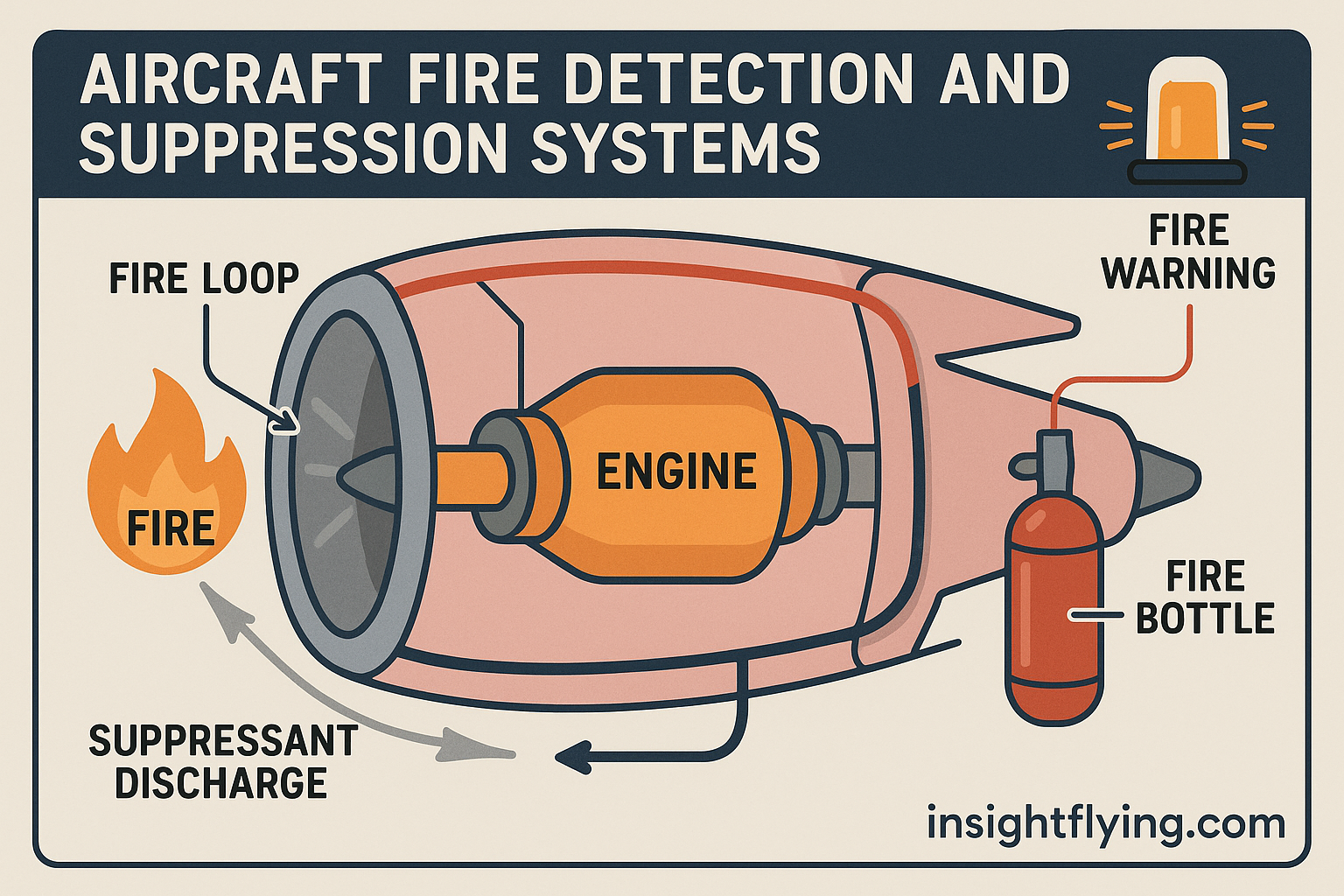
Aircraft Fire Detection and Suppression Systems
ระบบตรวจจับและดับเพลิงในอากาศยาน Overview Fire is one of the most dangerous emergencies in aviation. Because an aircraft is a closed environment with limited oxygen and escape options, early fire detection and rapid suppression are vital. Modern aircraft are equipped with multiple systems that continuously monitor and protect critical areas such as engines, cargo compartments, and the cabin….
-
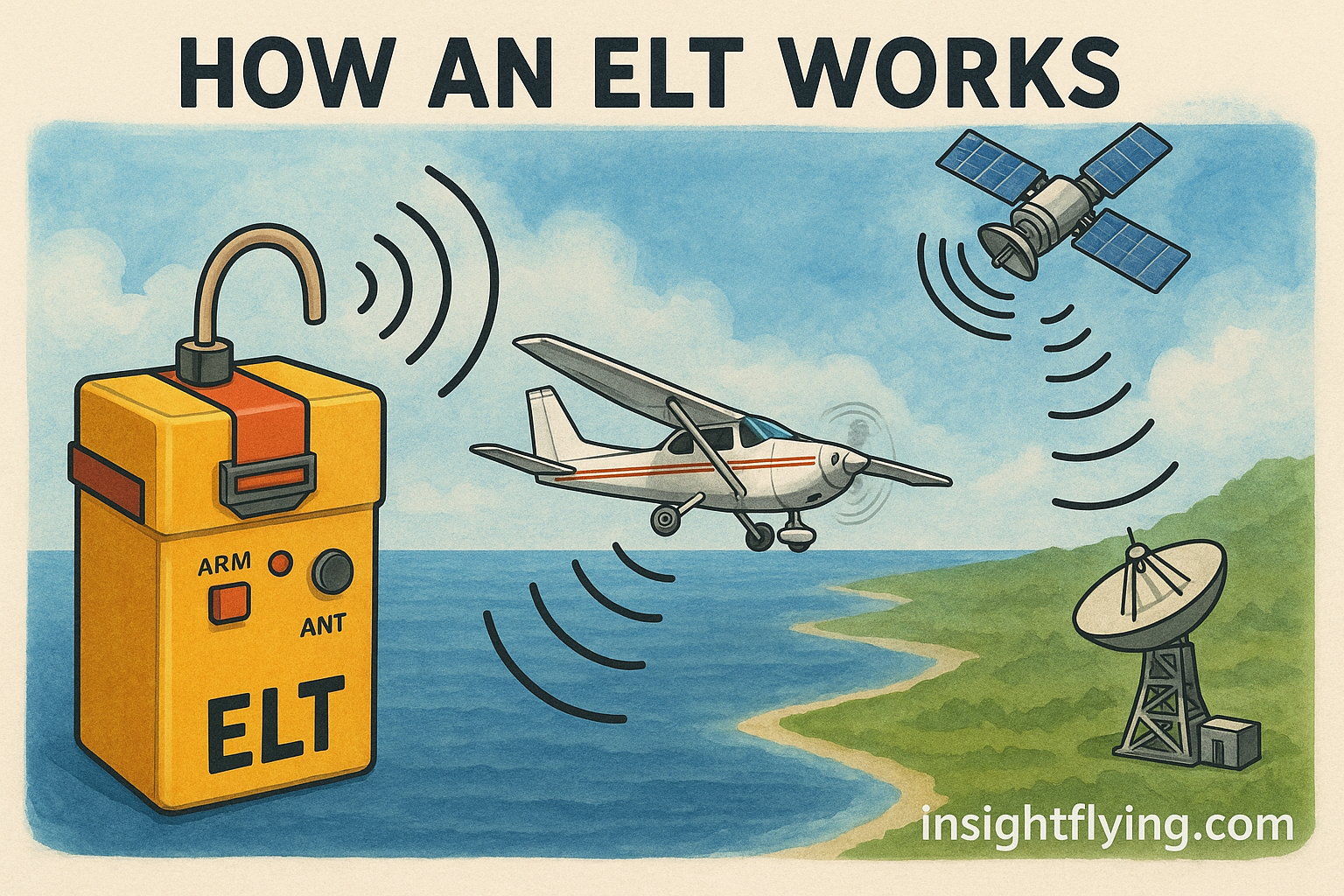
Emergency Locator Transmitter (ELT) and Survival Equipment
เครื่องส่งสัญญาณฉุกเฉิน (ELT) และอุปกรณ์ช่วยชีวิต What is an ELT? An Emergency Locator Transmitter (ELT) is a radio beacon designed to transmit a distress signal automatically when an aircraft experiences a crash or severe impact. Its primary function is to help search and rescue (SAR) teams locate the aircraft quickly by sending signals on international distress frequencies. เครื่องส่งสัญญาณฉุกเฉิน…
-
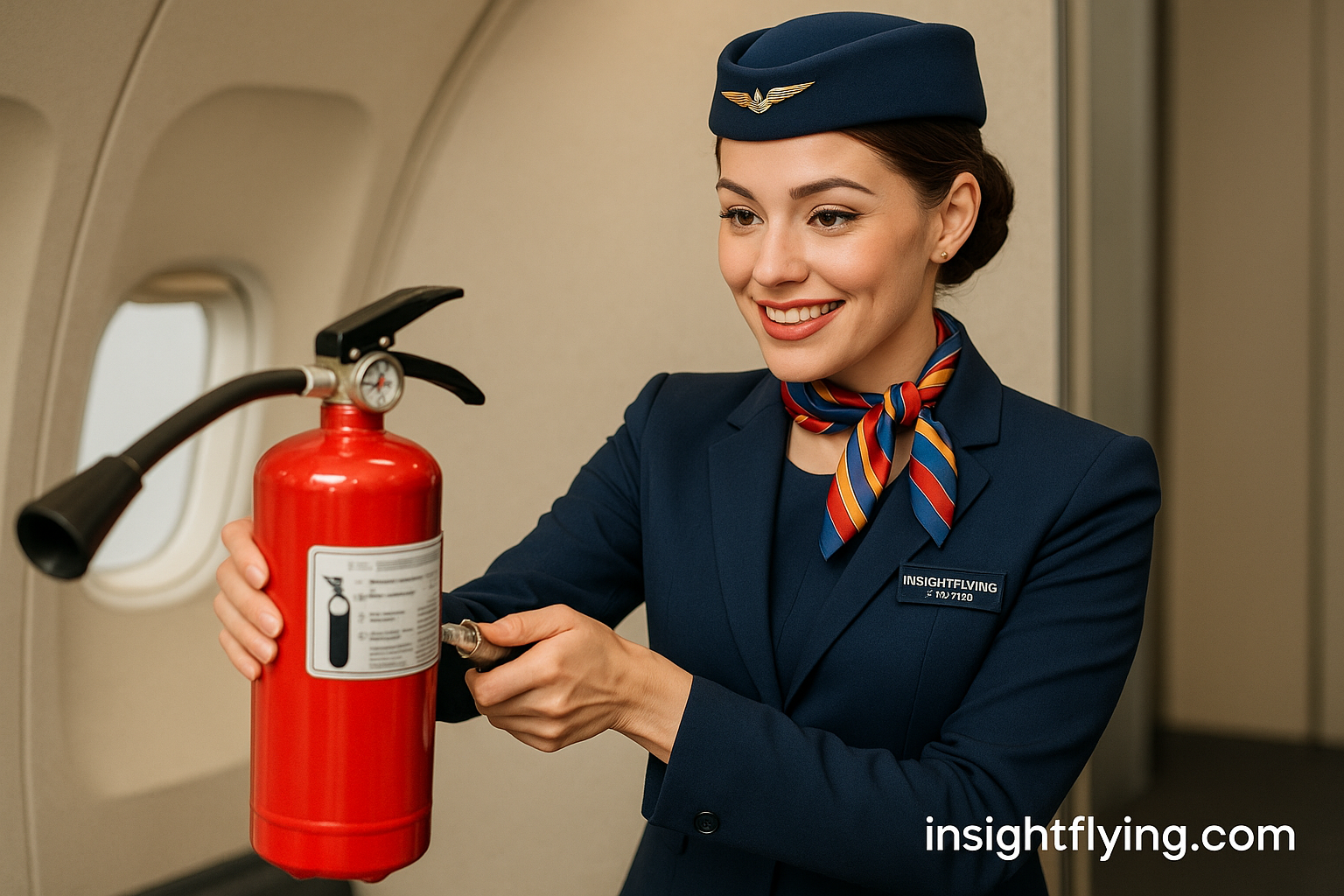
Fire Extinguishers and Smoke Hoods: Combating Fire in the Sky
เครื่องดับเพลิงและฮู้ดกันควัน: ด่านป้องกันไฟไหม้บนท้องฟ้า The Risk of Fire Onboard Fire is one of the most serious emergencies on an aircraft. Even a small flame can become life-threatening due to the confined space and limited ventilation. Because of this, every aircraft is equipped with multiple fire extinguishers and protective breathing equipment (PBE), also known as smoke hoods, to…
-
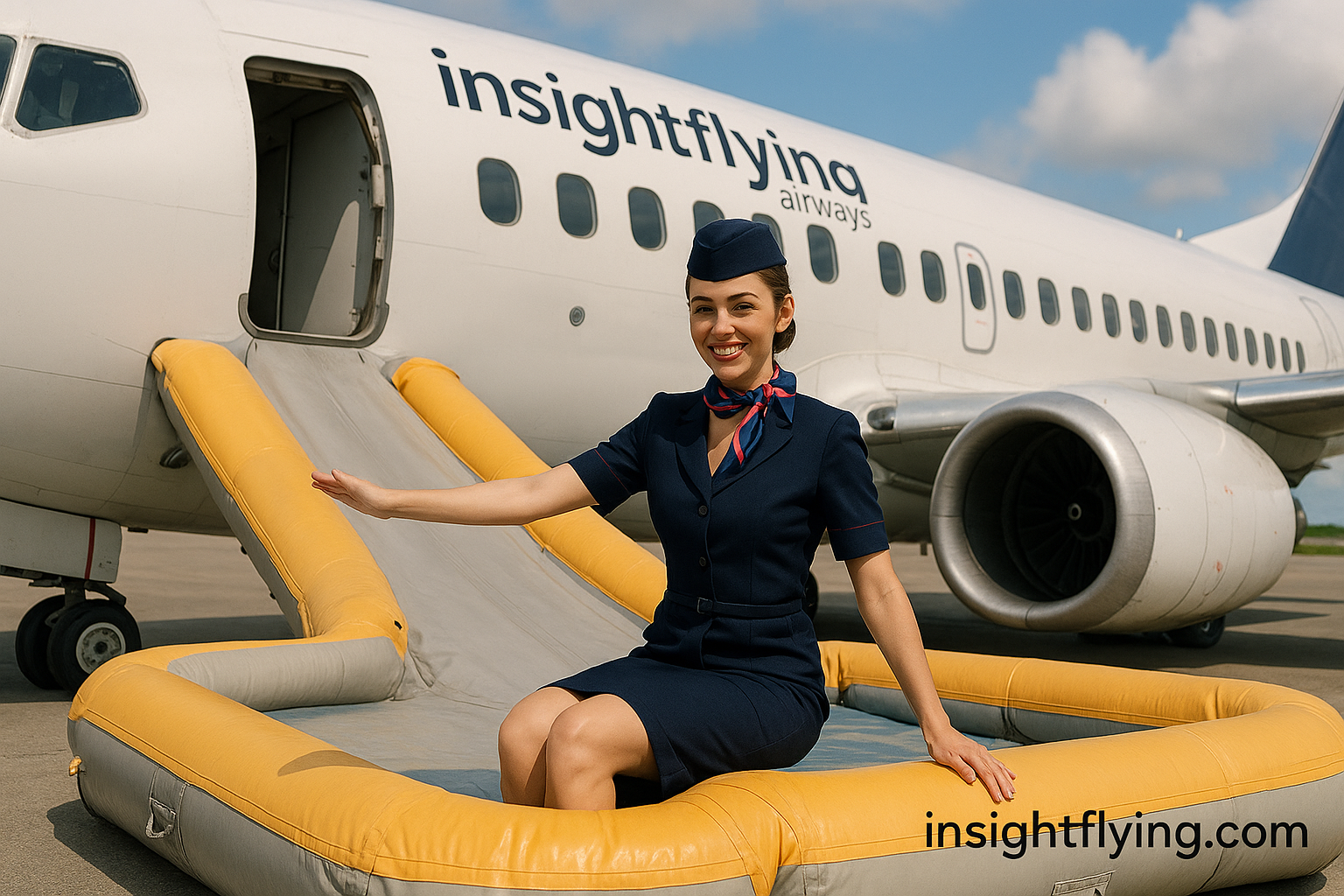
Evacuation Slides and Life Rafts: The Gateway to Survival
สไลด์หนีภัยและแพชูชีพ: เส้นทางสู่ความปลอดภัย What Are Evacuation Slides? Evacuation Slides are inflatable devices attached to aircraft doors and emergency exits, designed to allow passengers and crew to evacuate the aircraft quickly and safely during an emergency on the ground or after a forced landing. They are made of durable, airtight materials and can fully inflate within seconds…
-
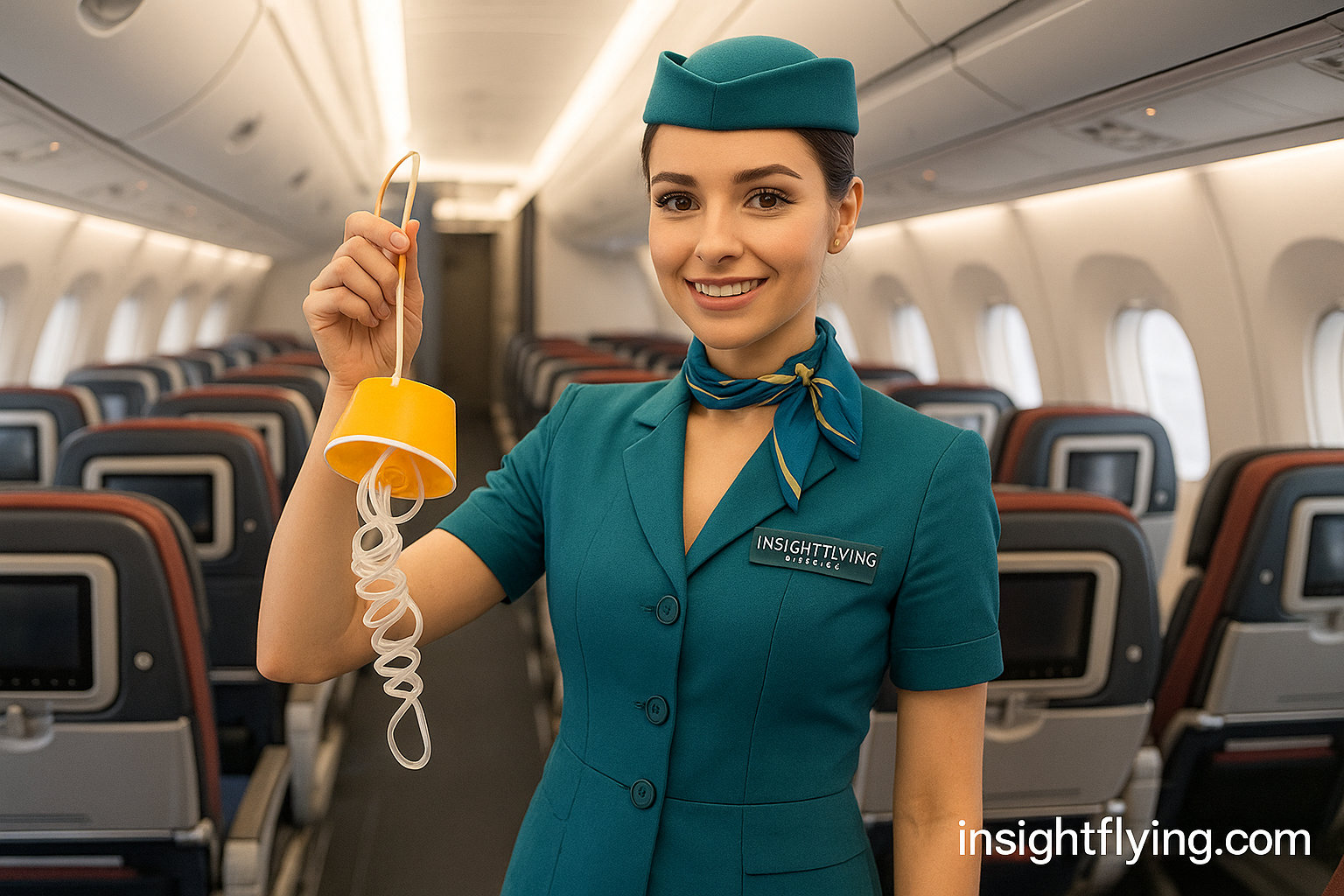
Oxygen Mask: Life Support in the Sky
หน้ากากออกซิเจน: อุปกรณ์ช่วยชีวิตบนท้องฟ้า What Is an Oxygen Mask? An Oxygen Mask is a life-saving device designed to provide supplemental oxygen to passengers and crew when cabin pressure drops below a safe level. During a sudden decompression, the oxygen masks automatically drop from overhead panels, ensuring that everyone on board can breathe safely at high altitude where…
-

Life Vest, Floating Aid, and Buoyancy
เสื้อชูชีพ อุปกรณ์ช่วยลอยตัว และแรงพยุง What Is a Life Vest? A Life Vest (also known as a Life Jacket) is a personal flotation device designed to keep a person afloat in water. It is usually made of buoyant materials such as foam or inflatable chambers that provide sufficient lift to keep the wearer’s head above the surface….
-

Emergency Exit Seat: Meaning, Restrictions, and Passenger Rules
ที่นั่งบริเวณทางออกฉุกเฉิน: ความหมาย ข้อจำกัด และกฎระเบียบสำหรับผู้โดยสาร What is an Emergency Exit Seat? An Emergency Exit Seat is a passenger seat located next to or near an aircraft’s emergency exit door. These exits are designed to allow rapid evacuation of passengers in the event of an emergency. Seats in these rows are specially designated because passengers seated there…
-
คนโดยสารใช้ใบอนุญาตนักบินช่วยบินเครื่องบิน
ผู้โดยสารที่ถือใบอนุญาตนักบินบนเที่ยวบินพาณิชย์ ต้องกลายมาเป็นนักบินขึ้นมาบินเครื่องบินจริงๆ เมื่อไม่นานมานี้ เกิดเหตุการณ์ที่น่าตื่นเต้นบนเที่ยวบินพาณิชย์เที่ยวหนึ่ง — ผู้โดยสารคนหนึ่งซึ่งถือใบอนุญาตนักบิน มาขึ้นเครื่องบินและจบลงด้วยการต้อง “บิน” เครื่องจริงๆ เรื่องราวนี้กำลังถูกพูดถึงอย่างกว้างขวางในสื่อออนไลน์ ประเด็นน่าสังเกต / วิพากษ์ / มุมมองทางการบิน มุมมองของ InsightFlying by Capt.Sopon P. เหตุการณ์นี้แม้จะฟังดูเหมือนเป็นเรื่องเล่าที่น่าตื่นเต้น แต่ก็มิใช่เรื่องที่ควรเกิดขึ้นในเที่ยวบินพาณิชย์โดยทั่วไป ความปลอดภัยต้องมาเป็นอันดับหนึ่ง และแม้ผู้โดยสารจะมีใบอนุญาตนักบิน การปฏิบัติงานจริงก็มีเงื่อนไขมากมาย (ความชำนาญ, ประสบการณ์, การอนุมัติทางกฎหมาย ฯลฯ) ผมเองมองว่านี่เป็นอีกหนึ่งเรื่องที่เปิดให้เราคิดต่อว่า “ในสถานการณ์พิเศษ — สายการบิน / หน่วยงานกำกับควรมีแผนรองรับอย่างไร” — หากเกิดเหตุฉุกเฉินที่กัปตันไม่สามารถบินต่อได้ อ่านข่าวเต็มภาษาอังกฤษได้ที่ https://supercarblondie.com/passenger-commercial-flight-pilot-license-fly-plane/ Share on FacebookPost on XFollow usSave
-

หน้ากากออกซิเจนผู้โดยสาร: วิธีใช้งานอย่างถูกต้อง
Passenger Oxygen Masks: How to Use Them Properly การจัดเก็บ & การแจกจ่าย ขั้นตอนการใช้งานหน้ากากออกซิเจน Steps to Use the Oxygen Mask ระยะเวลาที่ใช้งาน & เหตุผลที่ต้องลดระดับการบิน (Duration & Need for Descent) เวลาแห่ง “สติที่เป็นประโยชน์” (Time of Useful Consciousness) ประเด็นปัญหา & ข้อควรระวัง 🧠 Time of Useful Consciousness (TUC) ระยะเวลาที่มนุษย์ยังสามารถควบคุมสติและการตัดสินใจได้หลังเกิดภาวะขาดออกซิเจน ความสูง (Altitude) Time of Useful Consciousness (TUC) ระยะเวลาที่เหลือโดยประมาณ (Approximate Useful Time) หมายเหตุ (Remarks)…


Leave a Reply
You must be logged in to post a comment.